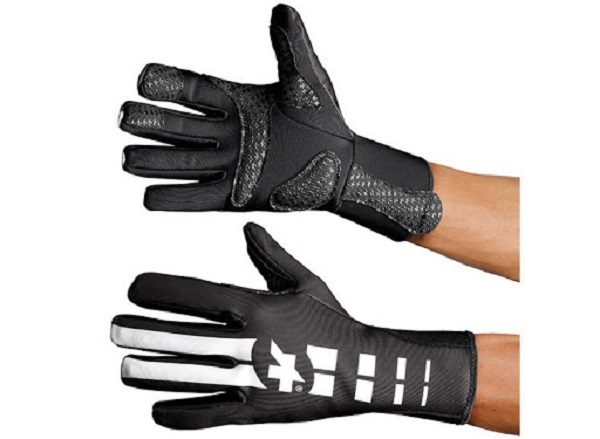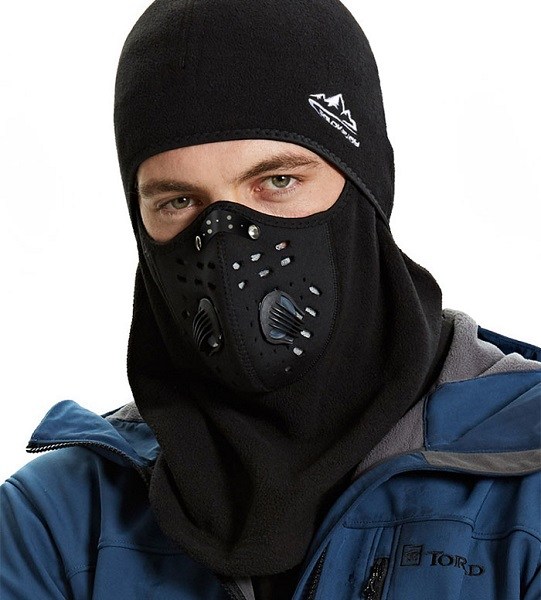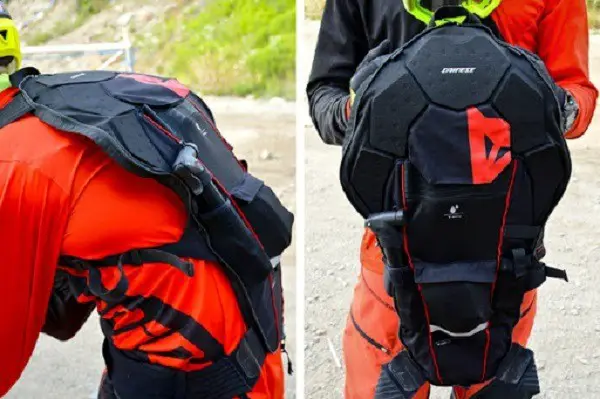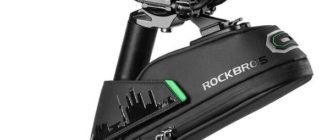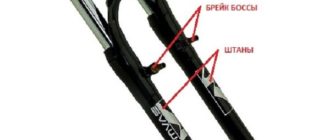The stereotype that summer is the season for bicycles and winter for skates and sledges is outdated. Professionals urge: do not hide your two-wheeled “horse” in the closet until spring! Winter riding is no worse than Cross-country—what-it-is–nuances skiing. Biking gives you joy, increases physical activity, and keeps the muscles and all systems of the body working.
Ice, snow and bitter cold are for masochists and too extreme for cyclists, the pessimists think. Optimists think differently. There is no such thing as bad weather. There are wrong clothes and wrong thoughts. Comfortable riding is possible even at temperatures as low as -20 ° C. The main thing is to choose the right winter outfit for the cyclist and prepare the vehicle. The choice is directly related to the characteristics of each element of cycling clothing, speed and place of travel of the biker.
When it is effective to use winter clothing cyclist
Striking a balance between freedom of movement and keeping warm is the first prerequisite for a successful winter cyclist. In Europe, the main purpose of using a bicycle is to commute to school, work and back home. In Hamburg or Copenhagen, for example, cyclists account for 65 percent of all traffic. With the help of a vehicle, it is possible to get anywhere in the city quickly. Winter temperatures in Denmark rarely drop below -7°C, but the constant wind burns your face and hands. Therefore, cyclists protect these parts of the body. In our country we have different climatic conditions, so the choice of clothing has its own peculiarities. In the light equipment will immediately freeze. Too warm equipment is fraught with hypothermia after the cyclist sweats.
The optimal winter outfit is:
- Multi-layered;
- waterproof;
- windproof;
- the clothing of a cyclist selected on the principle: at the beginning of the movement is cool, and after ten minutes – comfortable;
- mandatory use of reflective strips (in winter, the sun goes down quickly);
- bulky winter clothing should be comfortable and not block the cyclist’s view;
- the right choice of elements of equipment and the material used.
Winter riding is considered a good training of riding skills in extreme conditions. Special clothing is needed under falling snow, rain, as protection from wind and frost. Cyclist equipment should be safe, comfortable, appropriate for the cold season. Walking a bicycle in winter – an ideal method of hardening and strengthening the body, protecting against the spread of viral infections in passenger transport. Experienced cyclists advise considering the degrees outside the window and dressing 50°C lighter before leaving home. A wide range of winter clothing for the cyclist allows you to choose the perfect outfit. The main thing is that the winter outfit keeps you dry warm, regardless of the weather.
Footwear
During the cold season, the cyclist’s feet are sensitive to temperature changes and are the first to freeze. To avoid hypothermia, manufacturers have come up with special elements of winter equipment. The non-bulky shoes maintain the temperature of the limbs and are chosen depending on the weather.
For riding on non-contact pedals, the cyclist is suitable high trekking boots.
Features of an important part of winter outfit:
- good thermal insulation;
- ankle support;
- wear resistance;
- availability of membrane materials that prevent the penetration of external moisture inside the shoes;
- removable liner of several layers;
- thermal protection at temperatures down to -30˚ C.
Riding with contact pedals requires different shoes. Winter cycling shoes are an expensive piece of equipment, so “regular contacts” are insulated with thermal covers. Special shoe covers keep your feet warm without impairing functionality: they protect against getting wet and snow over the edge of the shoe.
Gloves
Cold-affected hands put extra pressure on them when braking, shaking or cycling in winter. Made of special material, thermal gloves resist water penetration, maintain a firm grip on the handlebars and keep you warm. The lower part is made of leather that reduces the heat exchange between the palms and the cold handlebars. The upper part is made of polyurethane fabric. Warmed models of winter equipment are made of neoprene (under them put the usual cotton ones).
To prevent hypothermia, cyclists are advised to choose thick windproof gloves that completely cover the fingers and hands. Do not let the hands, which depend on shifting speed, braking, grip with the steering wheel, bike control, freeze. For winter riding, it is better to buy double-layer gloves with long cuffs.
Hat
A helmet is an obligatory detail of safe riding. On icy roads, the element of equipment protects the cyclist’s head from injury, and the warm hat located inside keeps the right temperature. For riding in cold weather, purchase a special cover with a thin cap. The choice of professional cyclists is a balaclava made of synthetic knitted polyester fabric. Buff, similar to a tube of fabric, will also do. Winter helmet equipment was developed for sports use by the British. Detail of the cyclist’s equipment is worn as a hat, helmet, scarf. The item saves from wind and cold, wicks away moisture, protects the head from frost.
Mask
Winter cycling requires face and eye protection not only from the oncoming wind and frost. Snow is characterized by its ability to affect the optics, causing light scattering. The reflection coefficient of solar radiation varies from 85-95% and affects the eyes, the most light-sensitive human organ. Visual disturbances, temporary corneal cell death create a hazard while driving.
American scientists set the standard for sunglasses for winter outfit: not to let in more than 1% of UVB, and UVA must not be more than 0.3% of visible light. In winter, a ski mask or motorcycle goggles with plastic shackles saves you from blinding light, snow and cold air.
Jacket
Without special equipment, even in windless winter weather you can quickly get cold. When choosing a cycling jacket pay attention to 3 features of outerwear:
- Outside – windproof and waterproof jacket. Inside – water-repellent. Material used: windstop, fleece, gortex.
- The cut should correspond to the position of the cyclist while riding (arms outstretched forward, back bent).
- The protective elements are made of plastic.
To avoid hypothermia, it is recommended to have extra clothing that can be thrown over the jacket in rain or snow. Professional athletes use special overalls with lots of protective elements. The same popularity is enjoyed by membrane jackets that have recently appeared on the market. Products made of breathable, waterproof material, have the ability to let moisture out, not leaving sweat inside the clothes. Sometimes winter cyclists wear special ski jackets.
Pants
Winter outfit consists of several layers. Warming in the area of the hips and buttocks carry out cycling pants. A necessary detail in cycling shorts (“pampers”) acquires additional warming functions. In the summer men’s models, the necessary detail is used for comfort and to soften the impact when riding in the saddle. But you will not ride in shorts in winter. Therefore, long pants are produced with knee insulators, which protect from frost, wind, hypothermia. As an alternative, use narrow pants for Cross-country—what-it-is–nuances skiing, which protect from moisture and do not interfere with the movement.
Thermal underwear
In the cold season, comfortable skiing is impossible without overalls. But if you can experiment with jackets and pants, the inner layer of clothing is indispensable. No amount of cotton pants and t-shirts will be a natural thermoregulation. Riding a bike produces sweat, which is absorbed into the clothing as it evaporates. Instead of moderate cooling in the hot season, hypothermia occurs in the winter. Thermal underwear provides optimal thermoregulation. An indispensable item of winter gear, it performs three functions:
| Type of underwear | What material is made of | Features |
|---|---|---|
| Warming | Fabric with a weave in the form of cells | Keeps your body warm Keeps out the cold Does not wick away moisture Focused for low physical exertion |
| Functional | Tight synthetic underwear with ergonomic cut | Drains sweat from skin surface Does not warm Keeps you warm with heavy movement and extra clothing |
| Hybrid | Dual-layer fabric structure wicks away moisture and retains heat. | Artificial fabric layer absorbs sweat Outer layer of natural material is a thermal barrier |
To eliminate the possibility of overheating, expensive thermal underwear from reputable manufacturers have inserted mesh sections in the areas with the greatest return of temperature.
Backpack to protect your back.
In the cold season, the usual summer accessory is transformed into a means of protection from frost, wind, precipitation. Special winter backpacks for cyclists produce with insulated inserts that warm the back. Such models additionally absorb moisture from thermal underwear and jacket.
Conclusion
Properly selected winter outfit will help the cyclist to ride comfortably in complete safety from wind, frost, hypothermia. There is no arguing it. Even the harsh winter will not be a hindrance in biking.


